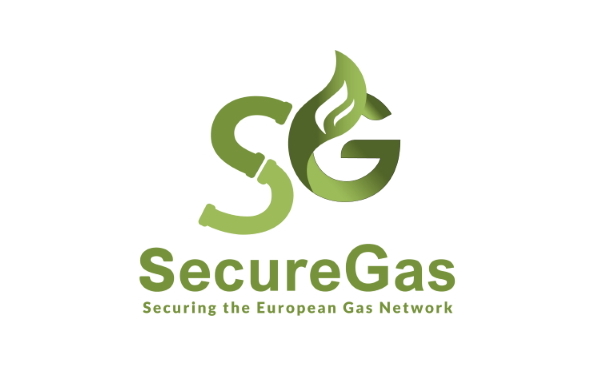Published on 28/01/2022

About the project:
The European gas network forms an integral part of the EU’s energy needs and its plans to meet the carbon reduction figures set out in the Paris Agreement. It already forms a significant role in the energy mix accounting for 22 percent of the energy usage, and with the growth of power-to-gas technologies initiatives, it is expected to grow. The gas network is complex by nature and highly interconnected. It crosses borders, utilizes a variety of different transportation pipelines, and is served by numerous diverse storage arrangements. All this complexity makes it a relevant example of Critical Infrastructure (CI) vulnerable to disruption by natural disasters, accidents, cyber-attacks, malicious behaviour, criminal activity or terrorism. Moreover, any outages or shortage in supply can have an adverse effect on the security of the EU and the well-being of its citizens. Therefore, providing security and resilience to this vital resource and its infrastructure is of paramount importance. However, given the interconnected nature of infrastructure and potential cascading effects, ensuring security requires a broader understanding of the ramifications of a disruption. Among CI, the gas network and infrastructure represent a challenging case to be made secure and resilient to both physical and cyber threats, and their combination in orchestrated pervasive and long-lasting threat vectors. When it comes to physical threats, EGIG (European Gas pipeline Incident data Group) reported a total of 1366 incidents from 1970-2016, the leading causes being Third Party Interference (TPI), such as ground works, malicious acts and sabotages, and ground movements. When it comes to cyber threats, although the numbers of incidents reported so far is less, the results can be devastating as well. Attacks such as Night Dragon and Shamoon have caused considerable financial damage to oil and gas companies. Global figures estimate that cybersecurity breaches in oil and gas and power cost operators $1,87 billion up to 2018.
Objectives
In line with the European Energy Security Strategy, the European Programme for European Critical Infrastructure Protection (EPCIP), the EU’s reliance on gas imports and the EU Regulation 2017/1938 on Security of Gas Supply, SecureGas focuses on the 140.000km of the European gas network covering the entire value chain from production to distribution, providing methodologies, tools, and guidelines to secure existing and incoming installations and make them resilient to cyber-physical threats. Over the course of the project, it will define a blueprint on how critical gas infrastructure should be planned, designed, built, operated, and maintained to cope with cyber-physical security threats. This will serve as baseline for defining a High-Level Reference Architecture (HLRA) that will be used as guideline for adapting, customizing, integrating technological components that will be finally demonstrated in a set of Business Cases. The resulting outcomes will be offered as services for the security and resilience of the EU gas network through a Platform as a Service (PaaS) model that allows modularity, flexibility, cooperation and third-party interoperability.
Use cases/verticals
Business Case 1: Risk-Based Security Asset Management of Gas CI, provided by DEPA, applied and tested to strategic project managed by DEPA (e.g. IGB, EastMed) and to gas networks in Sub-Urban Areas provided by EDAA.
Business Case 2: Effects (through simulations) of attacks/disruption to the vital nodes of Gas transmissions network raising via the combination of cyber-physical attacks, provided by AMBER, applied to the Jauniūnai network node in Lithuania, part of the IGDL project.
Business Case 3: Technical countermeasures (e.g. situational awareness, wide areas surveillance) for the resilience of strategic pipelines networks against cyber-physical threats, provided by ENI, tested to upstream gas pipelines with connection to the Italian Gas grid.

WINGS involvement
WINGS will be involved in SecureGas developing improved AI components for the project platform and contributing to their integration as well as customization to the needs of Business Case 1 and 3, based on Big Data, Machine Learning and Predictive Analytics expertise. As such, WINGS will lead Task 3.2 “Information Processing and Management” by exploiting the proprietary Cataract (proaCtive mAnagemenT plAtform foR smArt Connected waTer) platform and extending its functionalities. Moreover, WINGS will lead Task 4.2 “SecureGas components customization to Business Case 1” and assist the realization and execution of the pilots in Greece and Italy.
WINGS prospects /exploitation
Through the SecureGas project, WINGS aims to enrich its portfolio with new and improved components for the Utilities vertical and the Gas sector. Additionally, its services will be adapted and customized to the real-world needs of the end users and their capabilities will be trialed and verified during the execution of the pilots.
Awards & demonstration video
TBA
Website: https://www.securegas-project.eu/
Framework: H2020-SU-INFRA-2018
Duration: 06.2019-05.2021
![]() This project has received funding from the Horizon 2020 programme under grant agreement No 833017
This project has received funding from the Horizon 2020 programme under grant agreement No 833017

